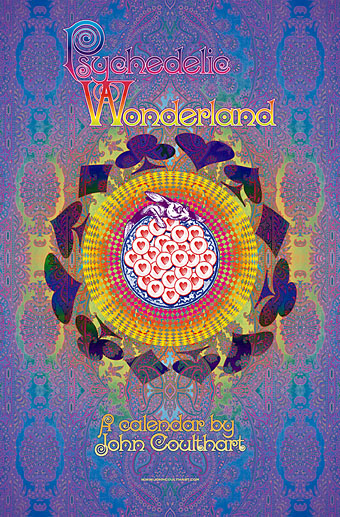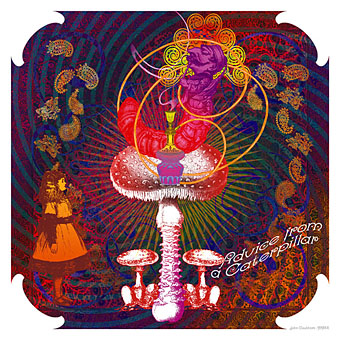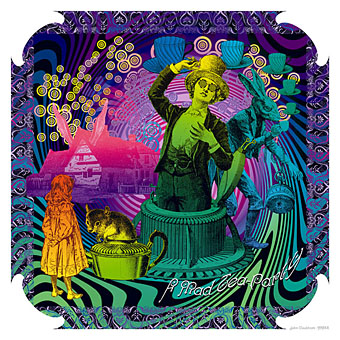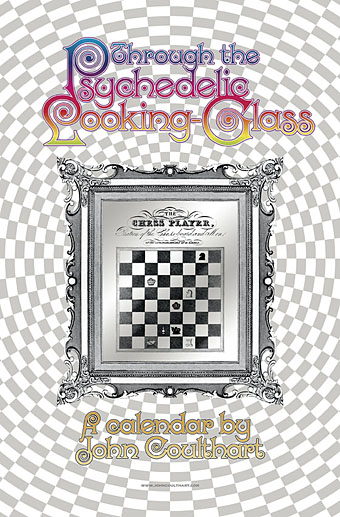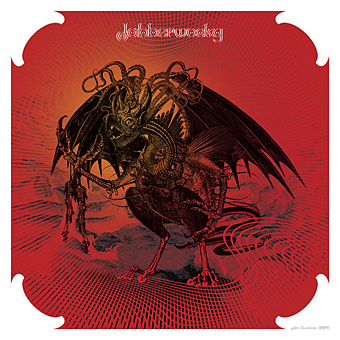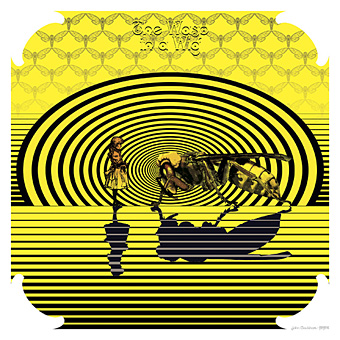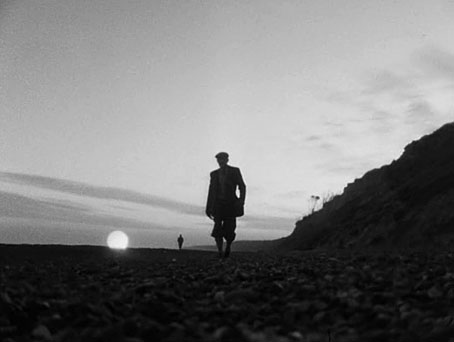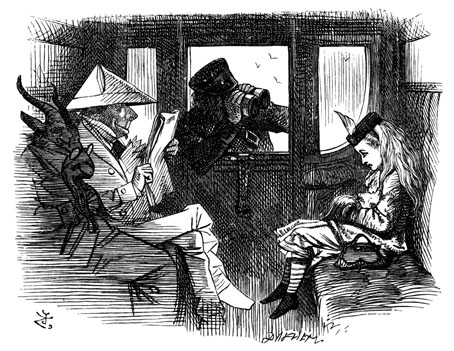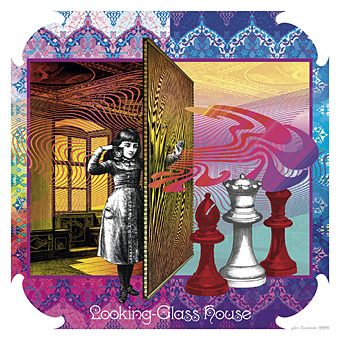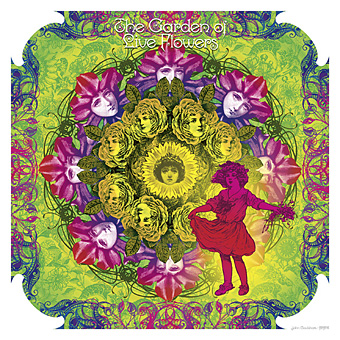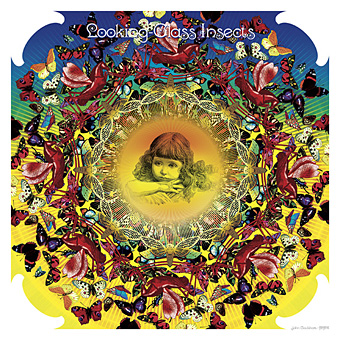
Alice and the Caterpillar (1865) by John Tenniel.
It’s perhaps surprising that an art gallery, rather than a library, is holding a huge survey exhibition about Alice, but then Carroll’s creation has been and still is the inspiration of artists, photographers, theatrical designers, animators, film-makers.
Thus Marina Warner writing about an exhibition of art based on Lewis Carroll’s Alice books opening at Tate Liverpool this Friday:
Alice in Wonderland will offer visitors a rare opportunity to view Carroll’s own drawings and photographs, alongside Victorian Alice memorabilia and John Tenniel’s preliminary drawings for the first edition of the novel.
Carroll’s stories were soon adopted by other artists. Surrealist artists from the 1930s onwards were drawn towards the fantastical world of Wonderland where natural laws were suspended. From the 1960s through the 1970s, Carroll’s Alice tales also prompted conceptual artists to explore language and its relationship to perception, and the stories inspired further responses in Pop and Psychedelic art. Expect to see works by artists ranging from Salvador Dalí and René Magritte, to Peter Blake and Yayoi Kusama. (more)
The exhibition runs to January 29th, 2012, and I suppose this gives me a convenient opportunity to point again to my psychedelic Alice calendars which have been updated for the forthcoming year.
Previously on { feuilleton }
• Coulthart calendars for 2012
• Scenes from a carriage
• Through the Psychedelic Looking-Glass: the 2011 calendar
• Jabberwocky
• Alice in Acidland
• Return to Wonderland
• Dalí in Wonderland
• Virtual Alice
• Psychedelic Wonderland: the 2010 calendar
• Charles Robinson’s Alice’s Adventures in Wonderland
• Humpty Dumpty variations
• Alice in Wonderland by Jonathan Miller
• The Illustrators of Alice

